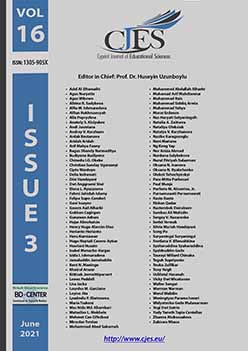Introducing the second law of thermodynamics using Legitimation Code Theory among first year chemistry students
Introducing the second law of thermodynamics using Legitimation Code Theory among first year chemistry students
Author(s): Taurayi Willard ChinakaSubject(s): Education
Published by: Birlesik Dunya Yenilik Arastirma ve Yayincilik Merkezi
Keywords: Abstraction; complexity; Legitimation Code Theory; second law of thermodynamics; semantic waves;
Summary/Abstract: This study investigated the introduction of the second law of thermodynamics using the Legitimation Code Theory (LCT) (semantic waves) among first year chemistry students. The aim of the study was to investigate the extent LTC (semantic waves) reduce the entropy concept's complexity and abstractness when introducing the second law of thermodynamics. A purposive sampling technique was used to sample participants from the accessible population. A sample of two hundred (n = 200) first-year chemistry students was chosen at a public university in South Africa. The study adopted a mixed-method research design. Data were collected using an Introductory Second Law of Thermodynamics Questionnaire (ISLTQ) and semi-structured interviews. Creating semantic waves during the lectures left many students in the trough of the sinusoidal wave of abstractness and complexity. Ranking the concepts related to entropy showed that many students knew the hierarchical order of the concepts. However, the interviews revealed that students tended to link entropy to the spread of particles instead of energy. The findings of this study are diagnostic and they assist module designers in determining the level of abstraction and complexity students face when introducing the second law of thermodynamics.
Journal: Kıbrıslı Eğitim Bilimleri Dergisi
- Issue Year: 16/2021
- Issue No: 3
- Page Range: 981-994
- Page Count: 14
- Language: English

